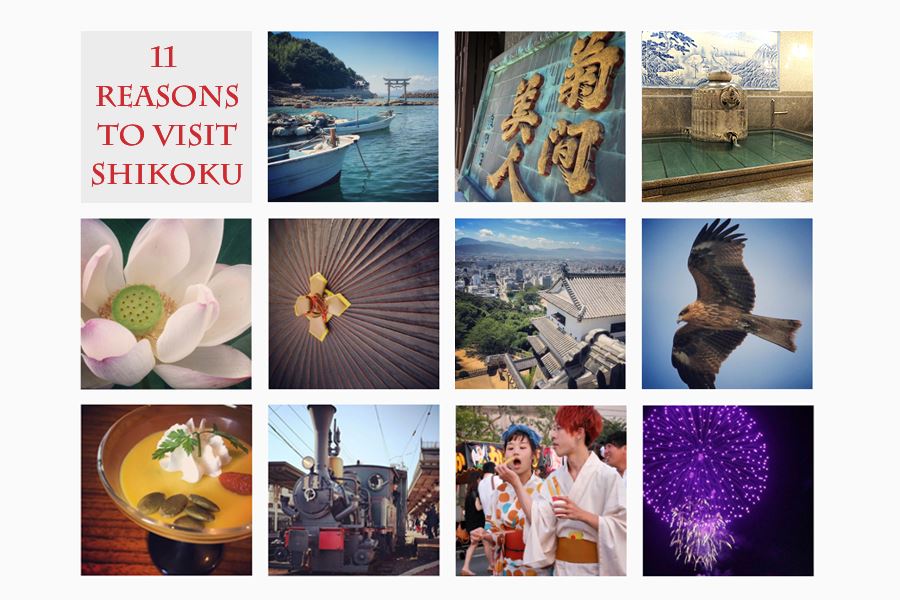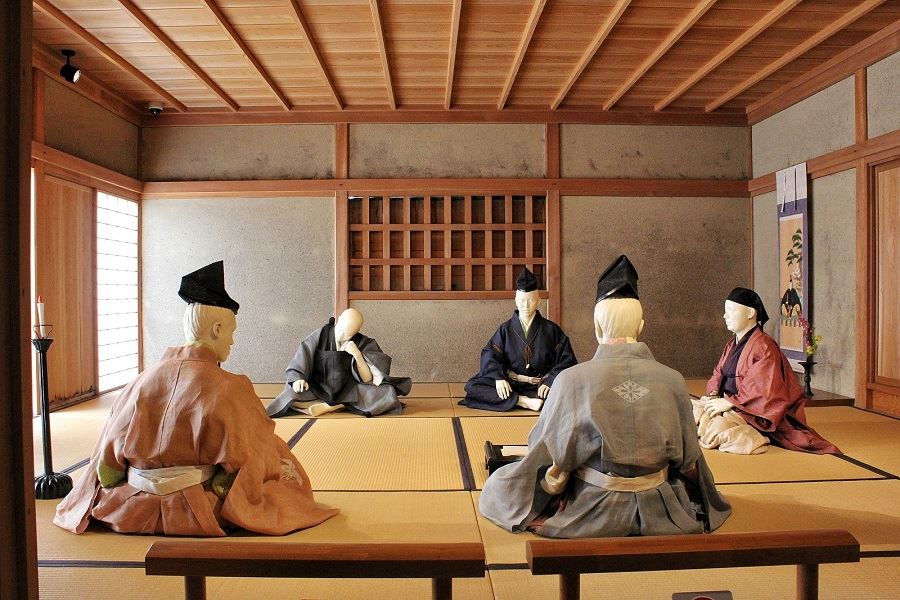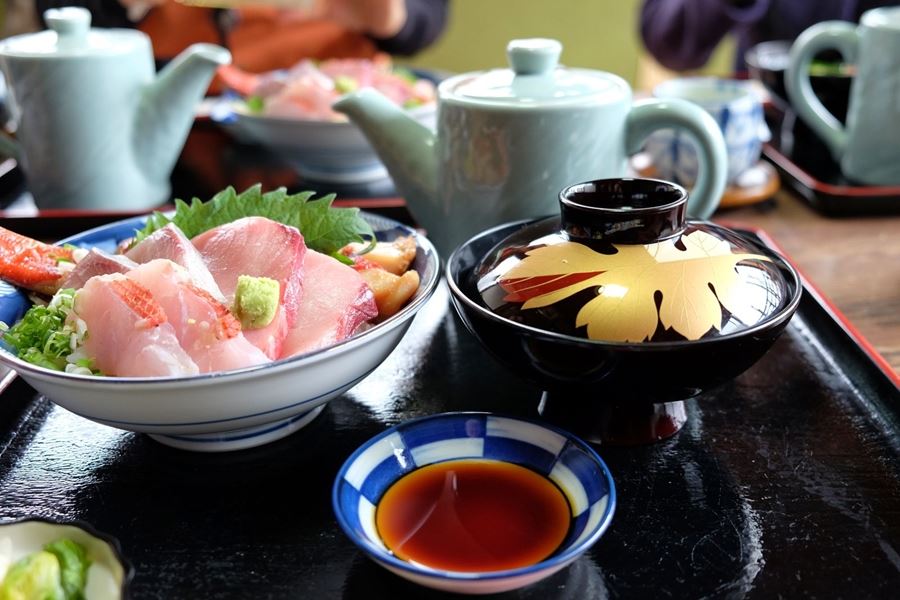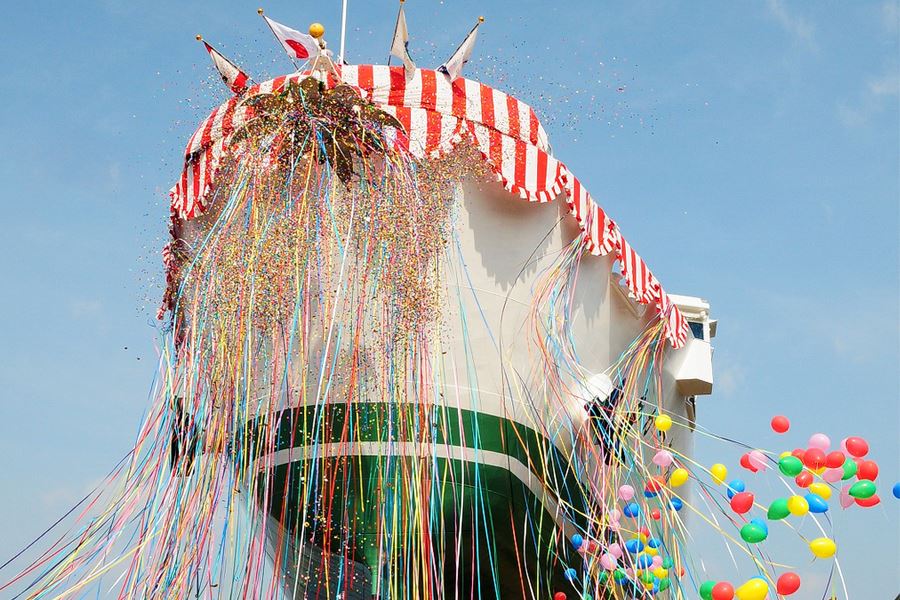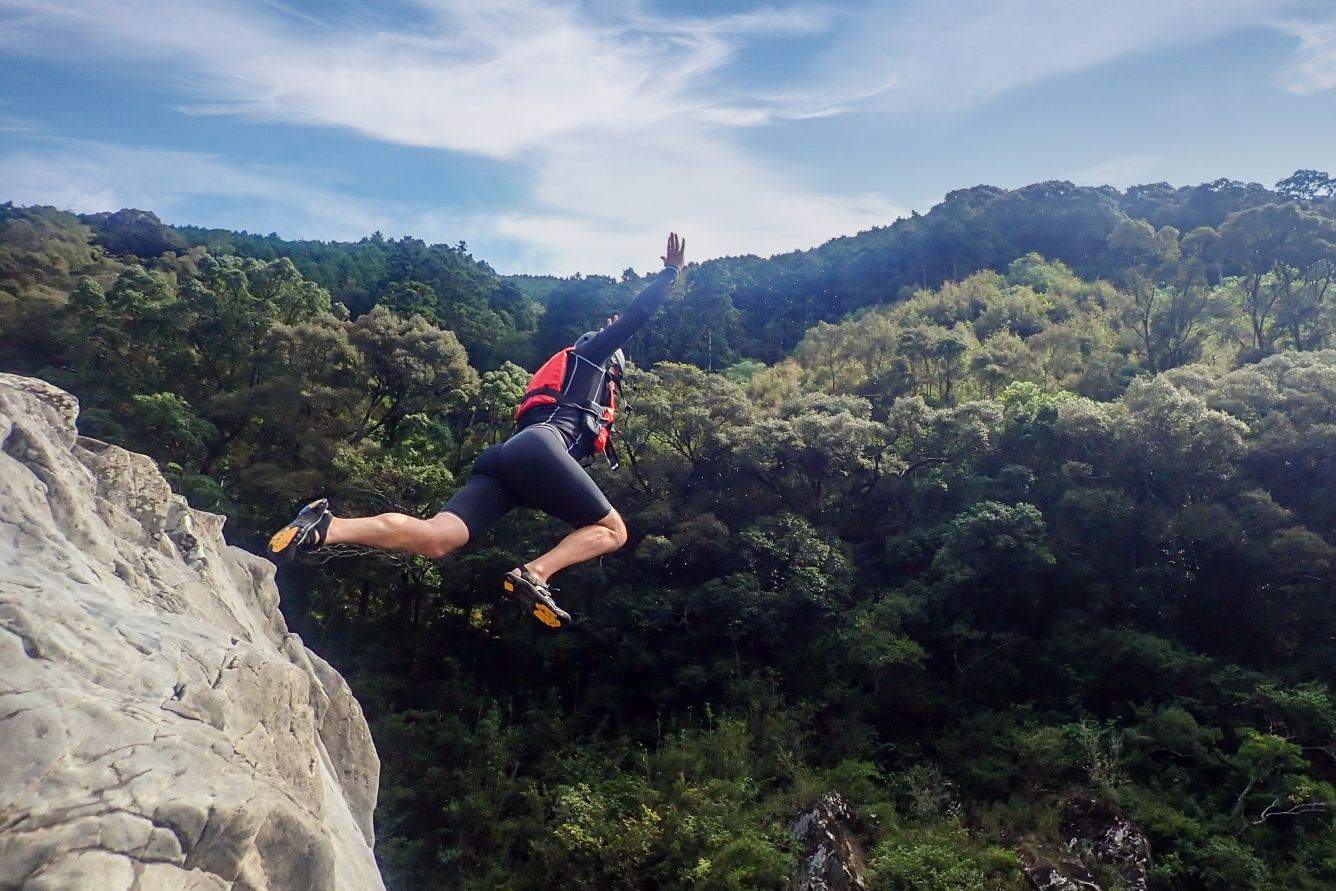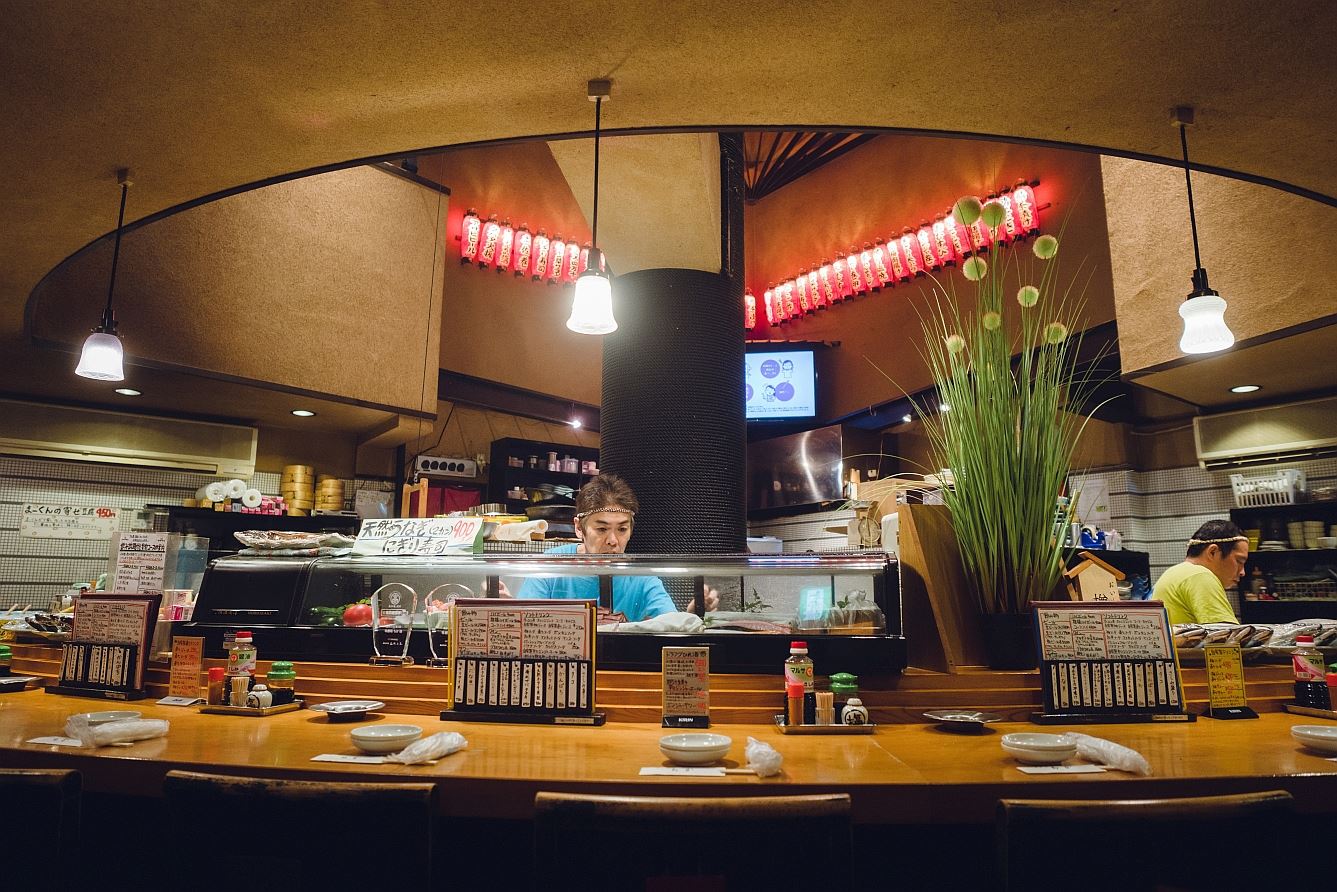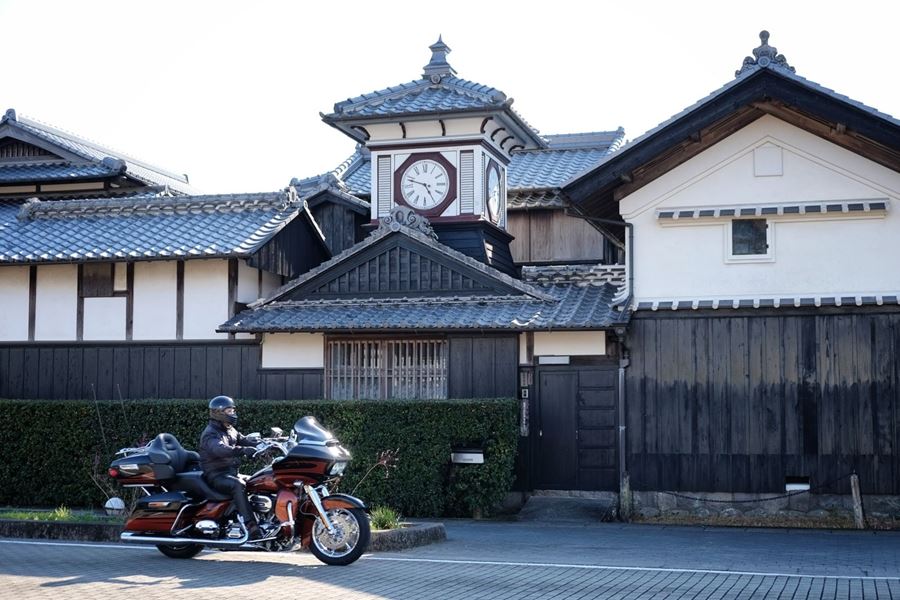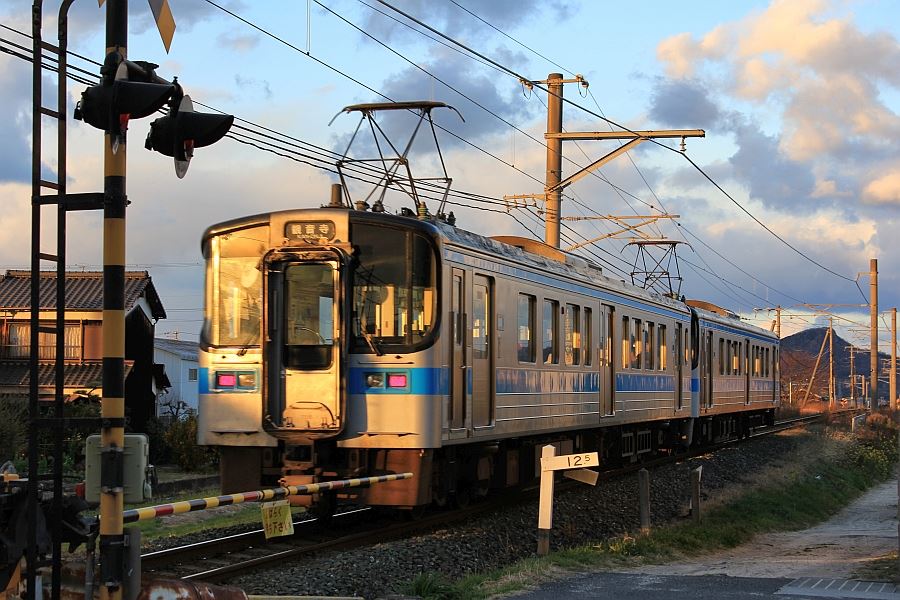Kōchi Top Ten
Home » Kōchi Top Ten
Kōchi Top Ten
In this series of articles, we look at the top ten places in the four main cities of Shikoku – Kōchi, Matsuyama, Tokushima and Takamatsu. Here we look at Kōchi city, the capital of Kōchi Prefecture.
Kōchi Castle
Located on a commanding hill in the centre of the city, the castle and its complex arrangement of defensive walls is strikingly beautiful. The defenses include some unique features – the base of the keep has iron spikes to deter ninja, there’s an elaborate gateway near the keep that leads to a dead-end, and plastered-over gun-ports that would have been smashed open by defenders during an attack. It’s the only castle in Japan to retain all of its original buildings in the innermost ring of defense still standing.
Katsurahama Beach and Ryuogu Shrine
Katsurahama is a crescent-shaped sweep of gravelly sand with a picturesque rocky promontory at one end, topped with a shrine and gnarled pine trees. The beach is backed by a ridge cloaked with more beautiful pines. Among the pines stands a large statue of Sakamoto Ryōma, one of Kōchi’s most celebrated sons. He’s gazing out over the broad Pacific as he did in his youth, wondering about the freedom he believed lay beyond the confines of feudal Japan. Next to the statue is a platform which offers a fine view of Ryoma from the side.
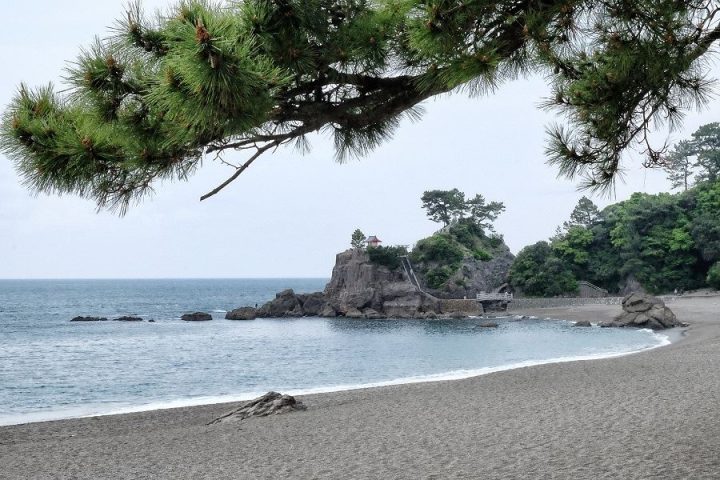
Sunday Market
Every Sunday since 1690, one of the main roads in central Kōchi, Otesuji, has been the site of a market known in Japanese as Nichiyouichi. This market features fresh local produce, cooked foods, local crafts and souvenirs. If you start at the eastern side of the market, you’ll end up in front of Kōchi Castle, 1.3 kilometers from your starting point. The market is a nice place to experience local Kōchi life, and if you’re self-catering, an ideal place to buy some authentic ingredients.
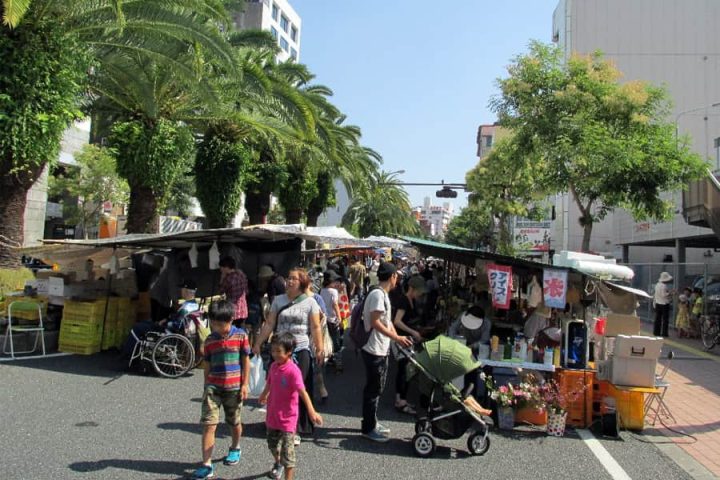
Hamachō Geisha and Dining
Kōchi is one of the few places left in Japan with a thriving geisha culture. These elegant and entertaining ladies are based at the Hamacho establishment, a building in central Kōchi city with banqueting rooms and a stage where the geisha perform their traditional dances. Unlike the costly and exclusive geisha of Kyōto and Tōkyo where an introduction is typically required, anybody can book an evening at Hamacho – indeed, if the place isn’t already fully booked, they’ll welcome you without a reservation. The food is excellent, and the simple and sociable entertainments are unforgettable.
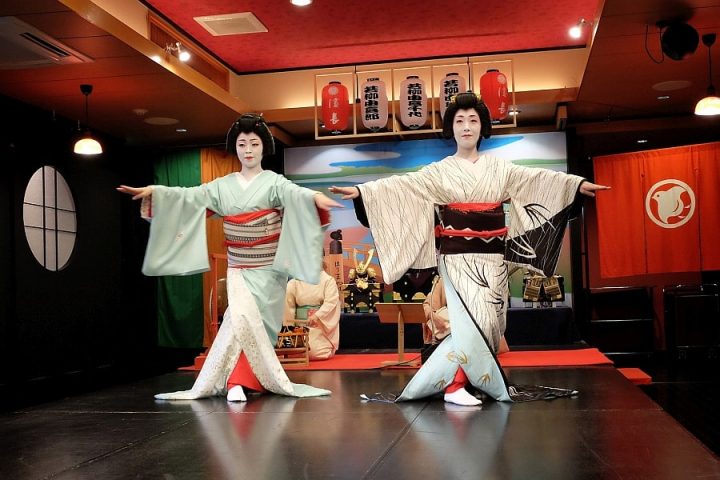
Panorama Restaurant and Observation Deck
Mt. Godai is a major hill in the middle of Kōchi city. It’s home to Chikurin-ji temple, the Makino Botanical Gardens, and the Panorama restaurant and observation deck. Panorama is an interesting, artsy cafe with floor-to-ceiling windows that offer a stunning view over the city and its complex inlets. The lunch menu offers some easy-to-order staples, and there’s also cake, ice-cream and coffee. You can climb up to the roof of the building to the observation deck which provides a 360-degree of Kōchi on one side, and the pagoda at Chikurin-ji peeking out over the trees and hills on the other. On the ground floor, there’s a souvenir shop. The view from the observation deck is not to be missed, even if it happens to be raining.
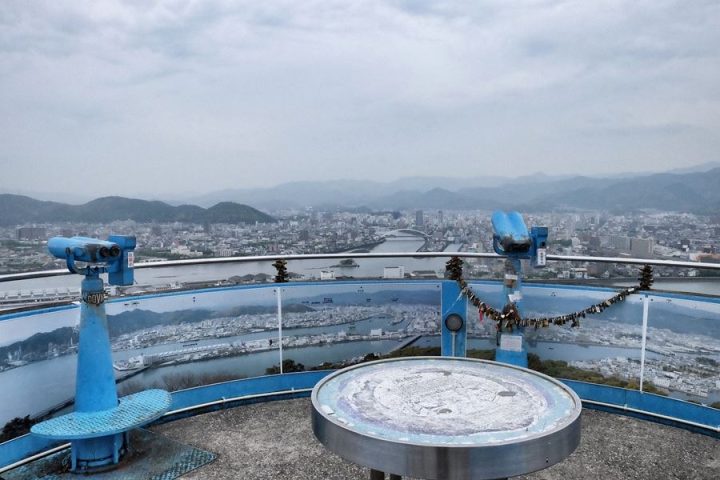
Makino Botanical Garden
Another attraction of Mt. Godai is the Makino Botanical Garden, dedicated to Dr. Makino Tomitaro, who almost single-handedly established botany in Japan. You enter the gardens through a passageway of intense greenery, arriving in an open structure covered with an acutely-angled, sweeping circular roof. In the middle of this area is a stand of delicate bamboo. The buildings were designed by architect Naito Hiroshi using locally produced wood. In the museum, exhibits document Dr. Makino’s life and work, all with proper English explanations. His exquisitely detailed drawings of plants are presented both as scientific documents and art.
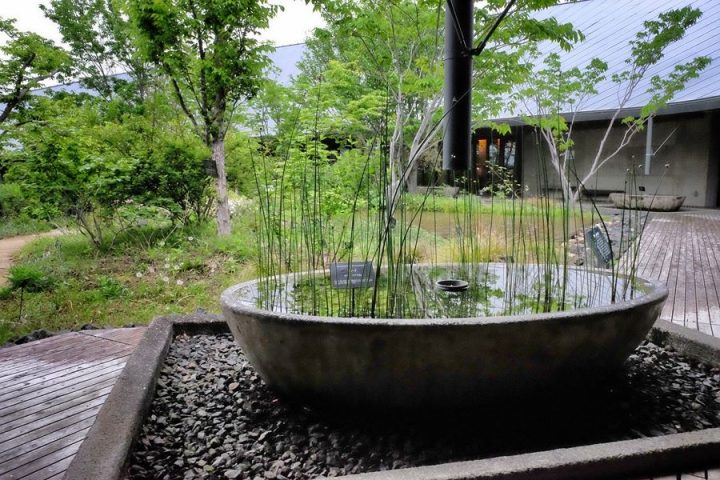
Chikurin-ji Temple
Chikurin-ji is a Shingon Buddhist temple, the 31st on the pilgrimage of 88 temples in Shikoku. It too is located on Mt. Godai, and its pagoda can be seen from the botanical garden next door. Chikurin-ji means ‘bamboo forest temple’, although today, Mt. Godai is more broad-leaf and pine forest than bamboo. Chikurin-ji has many beauties, including the entrance gate, red five-storied pagoda, gardens, and moss-carpeted approach. It has two celebrated gardens for viewing from inside the temple. One of the abbots of Chikurin-ji succeeded in performing the feat of self-mummification, involving fasting, meditation and eventually, burial alive with just a breathing tube.
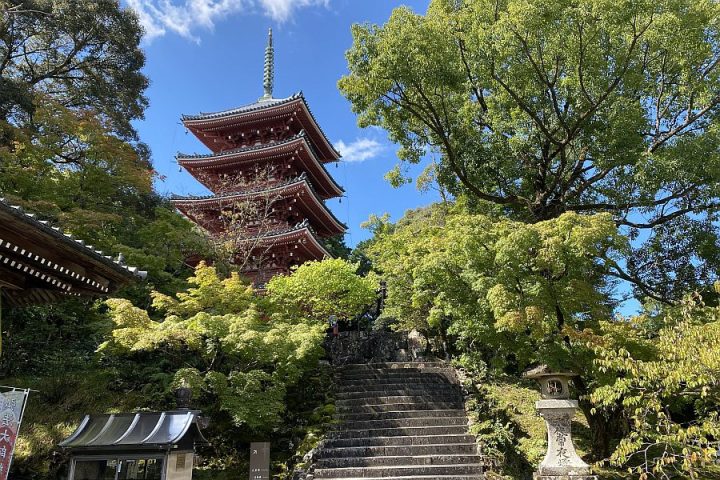
Hirome Ichiba
A couple of blocks from Kōchi Castle is Hirome Ichiba, perhaps Kōchi’s best-known place to eat. It’s a large hall filled with stalls selling food and drink, with communal seating areas. You purchase what you want from the stalls and take it to your table to eat. Here you can find all of Kōchi’s favourites like katsuo no tataki, nori tempura, whale, chicken, takoyaki, and all sorts of vegetables, not to mention the citrus fruit of Shikoku. You can watch katsuo tataki being prepared, with the large fish being seared over burning straw. The people of Kōchi are big drinkers, and the stalls offer beer, sake, shochu, and various mixes involving shochu. Drinking at Hirome Ichiba starts from the afternoon, especially at the weekend, and it’s a very sociable place.
Tosa Shrine
Tosa Shrine is mentioned in Japan’s oldest written records. Since ancient times, people have prayed here for prosperity, safety on journeys, and for recovery from illness. The shrine has a rustic air with its roof of cypress and its bare wooden colonnades. Shinane Matsuri, a festival held here every summer, is one of the major events in the area.
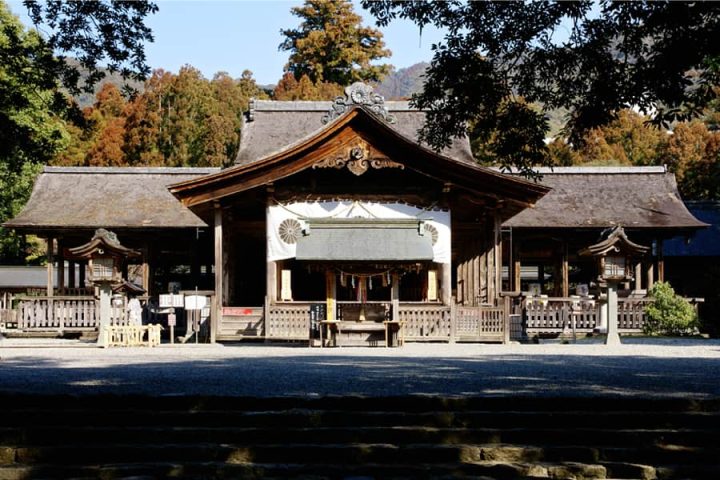
The Museum of Art, Kōchi
The Museum of Art, Kōchi has art works by Japanese and foreign artists including Marc Chagall, Ishimoto Yasuhiro and other celebrated artists connected with Kōchi Prefecture. The Museum Hall features a Noh stage, where various dance, theatre, film, and concert performances are held throughout the year. The museum building itself uses traditional materials of Kōchi, particularly plaster and tiles.
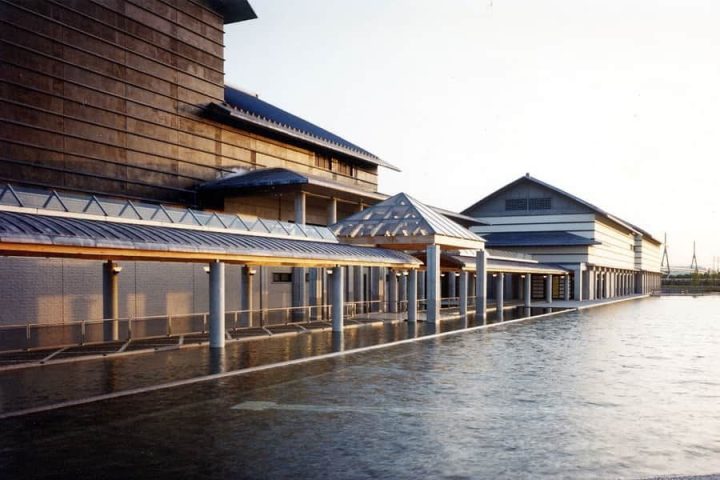
Kōchi City has other Shikoku pilgrimage temples to explore, and too many places for eating and drinking to cover here. But this Top Ten should give you a good idea of what you can do in Kōchi.
Related Tours

Experience the most beautiful and interesting temples of the Shikoku Pilgrimage in seven days.

A tour for families or friends, staying in the most characterful kominka and ryokan of Shikoku.

Visit the most beautiful and interesting temples of the Shikoku Pilgrimage and walk the toughest trails.

